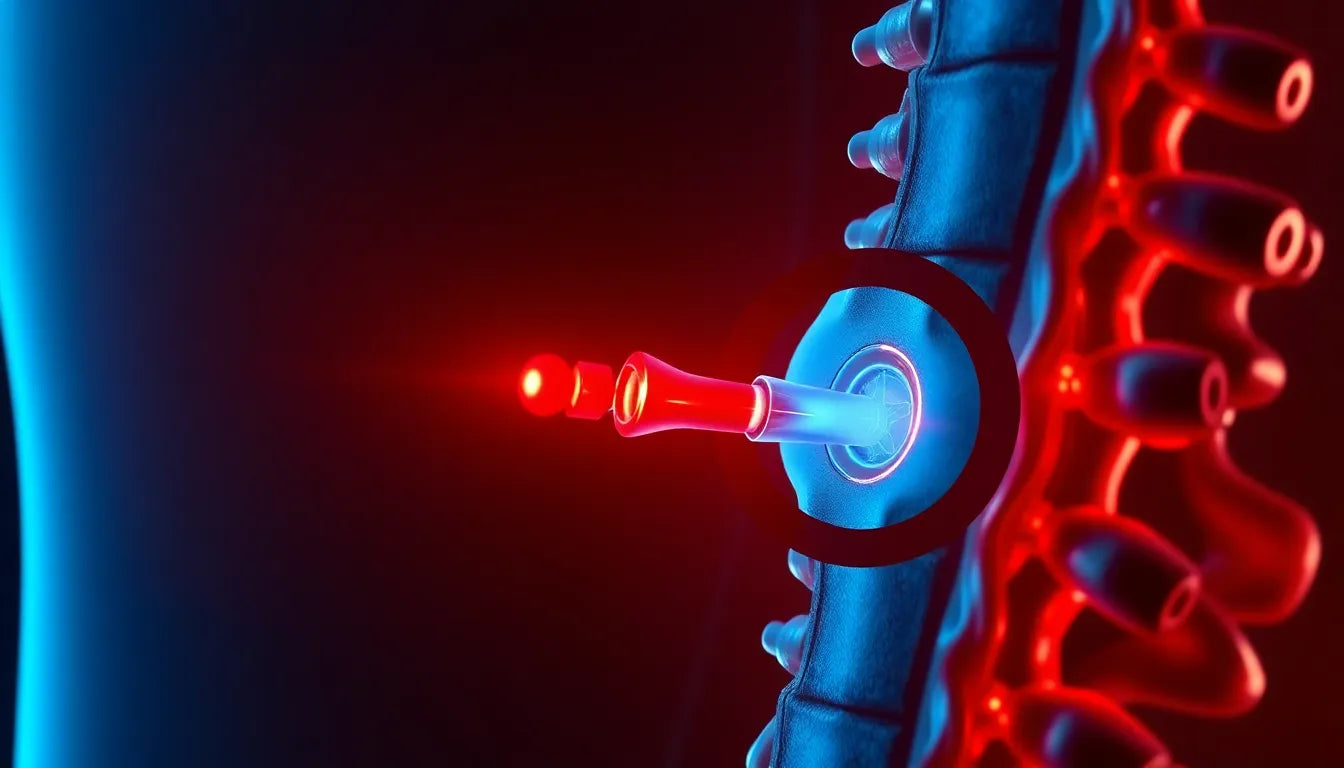In a world where maintaining good posture is increasingly challenging, understanding the condition known as kyphosis, or "hunchback," becomes crucial. Kyphosis is characterized by an exaggerated forward rounding of the back, which can significantly impact both posture and overall health. This condition not only affects one's physical appearance but can also lead to discomfort and a range of health complications if left unchecked.
types and causes of kyphosis
Kyphosis can manifest in several forms, each with distinct causes and characteristics. Postural kyphosis is the most common type and is often a result of poor posture habits, particularly during adolescence. Congenital kyphosis, on the other hand, is present at birth and occurs due to abnormal development of the spine. Another form, known as Scheuermann's disease, typically arises during the growth spurts of adolescence and is marked by a more rigid spinal curve. Understanding these types is essential, as they vary in prevalence and require different approaches to treatment.
importance of early intervention
Addressing kyphosis early is critical to preventing its progression and avoiding complications. Left untreated, kyphosis can lead to chronic back pain, reduced mobility, and a decreased quality of life. The condition can also exacerbate other health issues, making it vital to seek treatment promptly. Fortunately, a range of treatment options is available, tailored to the severity and underlying cause of the condition. Both non-surgical and surgical treatments offer pathways to improve posture and alleviate symptoms, helping individuals stand tall once again.
exploring treatment options
As we delve deeper into the realm of hunchback treatment, it is important to recognize that solutions are available for everyone, regardless of the severity of their condition. From non-surgical interventions like physical therapy and lifestyle changes to surgical options for more severe cases, there are effective treatments designed to enhance posture and improve quality of life. In the following sections, we will explore these treatments in detail, offering insights into how they can help individuals regain confidence and comfort in their daily lives.
non-surgical treatments for hunchback
When it comes to treating kyphosis, non-surgical interventions are often the first line of defense, particularly for mild to moderate cases. These treatments focus on improving posture, reducing pain, and enhancing the overall quality of life without the need for invasive procedures.
physical therapy and exercise
Physical therapy plays a pivotal role in managing kyphosis by targeting the muscles that support the spine. Therapists design personalized exercise programs that emphasize core strengthening and back extensor stretches. These exercises are crucial for improving spinal flexibility and alleviating discomfort associated with kyphosis. Regular participation in these routines can lead to significant improvements in posture and pain management. Daily home exercise programs, tailored to the individual’s needs, are often recommended to maintain progress and prevent further curvature.
bracing as a corrective measure
For children and adolescents with significant spinal curvature, bracing can be an effective treatment option. The Milwaukee brace, for instance, is commonly prescribed to young patients whose bones are still growing. This brace helps in slowing the progression of kyphosis by maintaining the spine in a more natural alignment. Typically, bracing is recommended for individuals with curves greater than 65 degrees and is intended to be worn for up to 23 hours a day until skeletal maturity is reached. The goal is to prevent further curvature and, in some cases, to correct the existing deformity.
medications for pain management
Medications can be an essential component of kyphosis treatment, particularly for managing pain. Over-the-counter options like acetaminophen, ibuprofen, and naproxen sodium are frequently used to alleviate mild discomfort. In more severe cases, doctors may prescribe stronger pain medications to provide relief. Additionally, for individuals with osteoporosis-related kyphosis, medications that strengthen the vertebrae can be beneficial in preventing fractures and further spinal deterioration.
lifestyle modifications and their impact
Adopting a healthy lifestyle is crucial in managing kyphosis effectively. Weight management, smoking cessation, and a balanced diet rich in calcium and vitamin D contribute to bone health and can help in maintaining a better posture. Furthermore, incorporating posture training and awareness into daily activities can prevent the worsening of kyphosis. Simple adjustments, such as using ergonomic chairs and avoiding prolonged periods of poor posture, can make a significant difference in managing the condition.
surgical treatments for severe kyphosis
While non-surgical treatments are effective for many, some individuals with severe kyphosis may require surgical intervention. Surgery is typically considered when the condition causes significant pain, cosmetic concerns, or neurological issues due to nerve compression.
spinal fusion surgery
Spinal fusion is the most common surgical procedure for correcting severe kyphosis. This surgery involves the use of metal rods and screws to realign the spine and fuse the affected vertebrae into a single, solid bone. The procedure usually takes about 4-5 hours, and patients can expect a hospital stay of 3-4 days. Recovery involves a period of 4-6 weeks at home, during which patients must follow specific guidelines to ensure proper healing. Spinal fusion can significantly improve posture and alleviate pain, offering a lasting solution for those with severe kyphosis.
indications for surgical intervention
Surgery is generally reserved for cases where non-surgical treatments have been ineffective, or when the curvature continues to progress, causing severe pain or functional limitations. It is also considered when kyphosis leads to nerve compression, resulting in neurological symptoms. Although surgery is a more invasive option, it can provide substantial relief and improve the quality of life for individuals with advanced kyphosis.
In conclusion, whether through non-surgical or surgical means, effective treatment options are available for those struggling with kyphosis. By addressing the condition early and choosing the appropriate treatment path, individuals can achieve better posture, reduce pain, and enhance their overall well-being.
patient-centered and age-specific approaches
When it comes to treating kyphosis, a one-size-fits-all approach does not suffice. Treatment plans should be tailored to the individual, taking into account their age, overall health, and specific needs. For children and adolescents, the focus is often on preventing the progression of the curvature through non-surgical means, such as bracing and physical therapy. In contrast, older adults may require a combination of lifestyle modifications and medications to manage symptoms and improve quality of life. Personalized treatment plans that consider the patient's unique health status and lifestyle are crucial for effective management of kyphosis.
ergonomic aids and daily living tips
Incorporating ergonomic aids into daily life can significantly enhance comfort and posture for individuals with kyphosis. Posture-correcting chairs and cushions are valuable tools that support the spine and encourage proper alignment. Additionally, adapting workspaces to be more ergonomic can prevent strain and promote better posture. Simple changes, such as adjusting the height of a computer monitor or using a standing desk, can make a notable difference. At home, ensuring that seating and sleeping arrangements support the spine is equally important. By creating an environment that facilitates good posture, individuals can reduce discomfort and prevent further curvature.
frequently asked questions
What causes kyphosis?
Kyphosis can result from various factors, including poor posture, developmental issues, or degenerative diseases. Each type of kyphosis has distinct causes, such as postural habits, congenital spine abnormalities, or conditions like Scheuermann's disease.
Can kyphosis be cured without surgery?
Yes, mild cases of kyphosis can often be managed and improved with non-surgical treatments. These include physical therapy, bracing, medications, and lifestyle changes aimed at strengthening the spine and improving posture.
Is kyphosis more common in children or adults?
Kyphosis can occur at any age, but certain types are more prevalent in specific age groups. For example, postural kyphosis is common in adolescents, while degenerative kyphosis is more frequent in older adults.
How long does it take to see improvements with physical therapy?
The timeline for seeing improvements with physical therapy varies among individuals. Many patients notice positive changes within a few months of consistent therapy, but the duration depends on the severity of the condition and adherence to the prescribed exercise regimen.
What are the risks associated with spinal fusion surgery?
Spinal fusion surgery carries potential risks, including infection, nerve damage, and complications related to anesthesia. However, these risks are relatively rare, and the procedure can offer significant benefits for those with severe kyphosis.
By addressing these questions and providing comprehensive information, this blog post aims to educate and empower readers with knowledge about effective hunchback treatments. Whether through non-surgical or surgical means, individuals with kyphosis can find solutions to improve their posture and enhance their quality of life.
Sources
- Cleveland Clinic. "Kyphosis: Causes, Symptoms, Types & Treatment."
- Mayo Clinic. "Kyphosis: Diagnosis and Treatment."
- Johns Hopkins Medicine. "Kyphosis: Treatment Approaches Including Exercises, Bracing, and Surgery."
- Stanford Health Care. "Kyphosis: Comprehensive Treatment Options and Patient Care Information."
- Healthline. "Kyphosis: Treating Kyphosis in Elderly Patients."
- University of Maryland Medical Center. "Patient Guide to Adult Kyphosis."
- Southeast Texas Spine Institute. "Non-Surgical Treatment Options for Kyphosis."


















